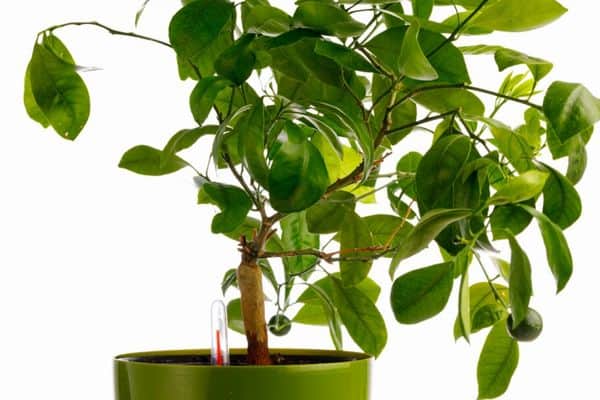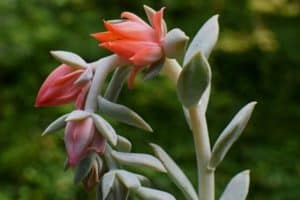Self watering pots can be a great way to keep your plants healthy and hydrated, but they do have some drawbacks.
In this article I’ll discuss the pros and cons of self watering pots so that you can decide if they are right for your plants.
This post contains affiliate links. Please read the disclosure for more info.

What is a self watering pot?
Self watering planters have two sections. The top section is for the potting mix and plant and the bottom contains the water reservoir.
Self watering pots use a moisture-wicking system to maintain a consistent moisture level in the soil.
There are many different designs of self watering pots, but they all function in essentially the same way.
Self-watering pots are ideal for plants that thrive in moist soil like carnivorous plants, fittonias, pothos, hostas and peace lilies.


 Benefits of self watering pots
Benefits of self watering pots
Saving water
Self watering pots can help to save water because the soil is kept consistently moist.
This means there is less chance of over or under watering and its a great way to conserve water, especially during periods of drought.
Retains nutrients
Another benefit of self watering pots is that they can help to retain nutrients in the soil.
Normally when you water a plant, the excess water leaches nutrients from the soil as it drains out, but self watering pots can help to retain these nutrients in the soil.
Watering from the bottom allows the plant to absorb water slowly and fewer nutrients are lost through evaporation or runoff.
Optimizes root growth
Another advantage of self watering pots is that they can help to optimize root growth.
The reservoir at the bottom encourages the roots to grow deeper and stronger.

Makes it easier to care for your plants
Self watering pots are very convenient because you don’t need to check on your plants as often and they’re ideal for first time plant parents.
If you’re going on vacation or just busy with other things, you can rest assured that your plants will still be getting the water they need.
You can also add a small amount of liquid fertilizer to the reservoir once a month.
This will provide a slow and steady supply of nutrients to your plants.
Reduces stress on plants
When plants are stressed from lack of water, they are more susceptible to diseases and pests.
By keeping the plant’s roots consistently moist, self watering pots can help to reduce stress and keep your plants healthy.
Reduces fungal diseases
Powdery mildew is a type of fungus that is common in humid environments or when the plants are watered from overhead.
Self watering pots can help to reduce powdery mildew and other fungal diseases by keeping the leaves dry.

Disadvantages of self watering pots
There are also some disadvantages using self watering pots.
Mold and mildew
Self watering pots hold water, so there is a risk of mold and mildew developing if they’re aren’t cleaned regularly.
Be sure to clean your self watering pots on a regular basis to reduce the risk of fungal growth.
Cost
Self watering pots can be more expensive than traditional pots, but they can save you money in the long run by helping you to conserve water and reduce the need for fertilizer.

Less control over watering
Another drawback is that you have less control over watering when using self watering pots.
This means that if you live in an area with frequent rain, your plants may end up being over-watered.
Not suitable for all plants
Self watering pots may not be suitable for all plants.
Plants that like the soil to dry out slightly in between watering, such as cacti and succulents, don’t do well in self watering pots.
Be sure to research the watering needs of your plant before choosing a pot.
Pests and diseases
If not maintained properly, self watering pots can also be a breeding ground for pests and diseases.
The reservoir of water can provide the perfect environment for mosquitoes to lay their eggs and if the water in the reservoir isn’t changed often, it can become stagnant and full of bacteria. [1]
To avoid these problems, be sure to clean your self watering pots and empty the reservoir of water regularly.

How to choose a self watering pot
When choosing a self watering pot, there are a few things to keep in mind.
First, consider the size of the pot. Make sure that it is large enough for your plant and that it has enough space for the roots to grow.
Also, consider the material of the pot. Self watering pots can be made from plastic, ceramic, or even concrete. Choose a material that is durable and easy to clean.
RELATED ARTICLES
- How to Water Cyclamen Plants
- How To Bottom Water Houseplants
- How To Water Snake Plants
- Benefits of Biodegradable Pots
Are self watering pots right for your houseplant collection?
With a little bit of research and care, self watering pots can provide a convenient way to give your plants the moisture they need.
Have you used a self water planter for your indoor plants? Let me know in the comments below.
Are you on Pinterest? I have boards dedicated to Indoor Gardens and Houseplants that you may enjoy. You can also find me on Facebook.










